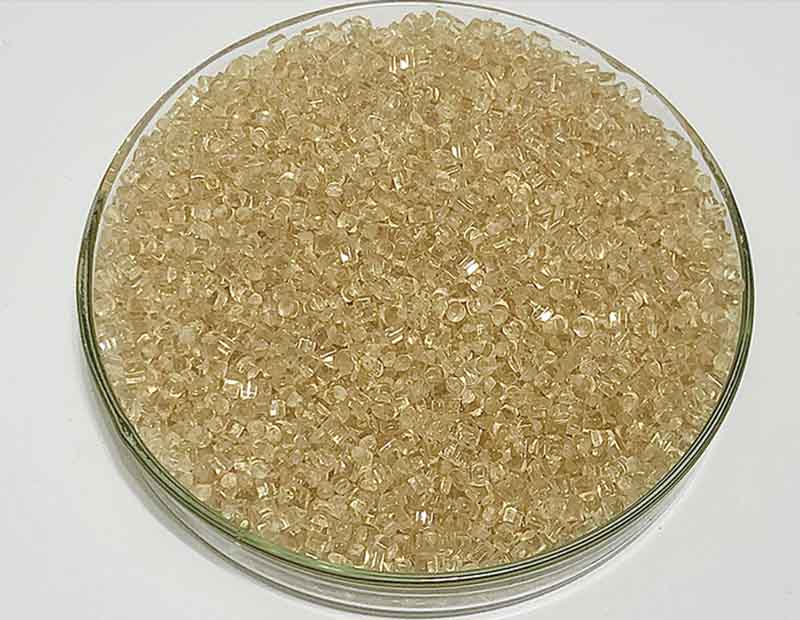PES Plastic Resin: Properties, Applications, and Maintenance
What is PES Plastic Resin?
Polyethersulfone (PES) is a High-performance thermoplastic resin belonging to the Polysulfone family. This amorphous polymer is characterized by its exceptional thermal stability, mechanical strength, and chemical resistance. PES resin maintains its structural integrity at elevated temperatures, with a glass transition temperature (Tg) of 225°C and a continuous service temperature of 180°C. Its tensile strength ranges from 80-90 MPa, while exhibiting excellent dimensional stability with a coefficient of thermal expansion of 55 x 10^-6/°C. The material demonstrates outstanding flame resistance, achieving a UL94 V-0 rating at 1.5mm thickness without requiring flame retardant additives.
Key characteristics of PES resin include:
High thermal stability: Retains mechanical properties up to 200°C
Hydrolytic stability: Withstands repeated steam sterilization (up to 1000 cycles at 134°C)
Chemical resistance: Resistant to most acids, bases, and hydrocarbons (pH range 2-13)
Dielectric properties: Volume resistivity of 10^16 Ω·cm and dielectric strength of 16 kV/mm
Optical clarity: Light transmission up to 88% with haze values below 1.5%

Application Scenarios
The unique combination of properties makes PES resin suitable for demanding applications across various industries:
Medical and Healthcare
PES is widely used in medical devices due to its biocompatibility (ISO 10993 compliant) and sterilization resistance. Applications include:
Surgical instrument components (autoclavable up to 134°C)
Membrane substrates for hemodialysis (0.2-0.45μm pore size)
Drug delivery systems requiring chemical resistance
Medical tubing with burst pressures exceeding 10 bar
Food Processing
The FDA-compliant nature of PES makes it ideal for food contact applications:
Food processing equipment components (withstand CIP cleaning at 85°C)
Filter housings for beverage processing
Microwaveable food containers (dielectric constant of 3.5 at 1MHz)
Electrical and Electronics
PES's electrical properties enable use in:
Printed circuit board substrates (CTI > 600V)
Connector housings with comparative tracking index of 175V
High-temperature wire insulation (UL 1446 Class H rating)
Industrial Applications
Industrial uses leverage PES's mechanical stability:
Pump components for chemical processing (resistant to 10% NaOH and 30% H2SO4)
Membranes for gas separation (CO2/N2 selectivity > 30)
Aerospace components meeting FAR 25.853 flammability requirements
Maintenance and Care Guidelines
Proper maintenance extends the service life of PES components:
Cleaning Procedures
For optimal performance:
Use mild detergents (pH 5-9) at temperatures below 80°C
Avoid abrasive cleaners that may scratch surfaces (hardness: Rockwell M88)
For sterilization, limit autoclave cycles to 134°C for 20 minutes maximum
Ultrasonic cleaning is effective at 40kHz frequency
Storage Conditions
Proper storage prevents material degradation:
Store in original packaging at 15-30°C and 30-60% RH
Protect from UV exposure (weatherability limited to 1000h Xenon arc)
Pre-dry at 150°C for 4 hours before processing (moisture content < 0.05%)
Handling Precautions
Special considerations for PES components:
Use torque limiters during assembly (maximum stress 50 MPa)
Avoid prolonged exposure to polar solvents (e.g., DMF, DMSO)
For bonded assemblies, use epoxy adhesives with peel strength > 20 N/cm
Inspection and Replacement
Regular monitoring ensures performance:
Check for surface crazing under 10x magnification annually
Replace components showing >5% dimensional change from baseline
Monitor electrical properties if dielectric strength drops below 12 kV/mm






